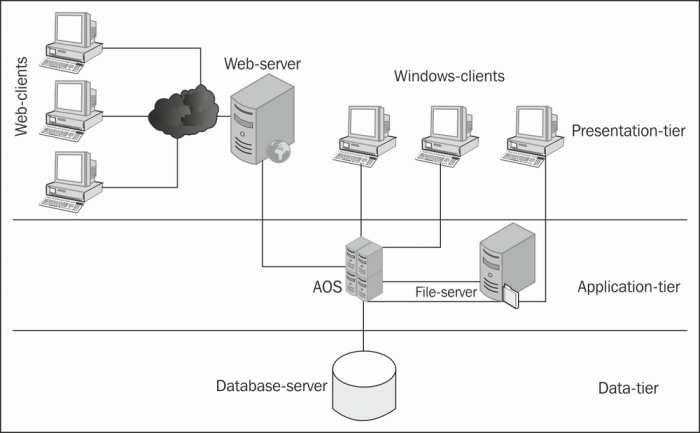Now that you have seen some of the development tools in AX, let's have a look at how AX is built from a technical perspective.
We will look at the following concepts:
- Application object layers
- Network tiers
Dynamics AX 2012 consists of 16 application object layers that contain all the elements you see in the AOT. These 16 layers are basically formed out of eight core application layers and a patch layer for each core layer.
These layers can be looked at as an onion with multiple layers; the lowest layer or core application layer being the SYS layer and the outermost layer being the user layer USR.
So when any application element is being executed, the system will look at the outermost code layer first, to see if there is any code for that element. If there isn't, it peels a layer off the onion and tries the next layer. When it hits a layer where the element exists, it will use the code from this layer and will not continue to peel off layers to find code for that element in the innermost layers. The 16 layers of Dynamics AX 2012 are shown here:

The following list is taken from the Dynamics AX 2012 MSDN site and provides an explanation for each layer:
AX 2012 is built as a three-tier solution. This means that it has a data tier, in which the data is stored, a logic tier, where all business logic is executed, and a presentation layer, which presents information to the user and receives input from the user.
As an AX developer, you can choose to have the piece of code you are writing to run on the client or the server. The client will represent the presentation tier and the server will represent the logic tier. The AX server is also called the Application Object Server (AOS). The data tier is hosted on MS SQL Server.
There are also two completely different clients available in AX. The regular Windows client, also known as the rich client, is the one most users think of when we talk about the AX client; but there is also a business connector client. The business connector client can be used by a third-party application to integrate with AX, and it is also used by the enterprise portal.
In addition to these three layers, we also often talk about a fourth component in the tier model, which is the file server. The file server is not really a tier itself, as it does not execute any code but only stores the code.

